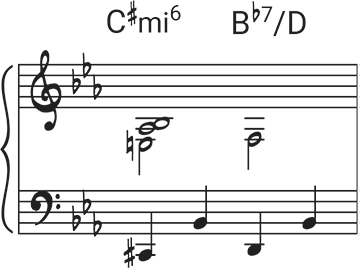In this post, I’ll be sharing a crucial part of my reharmonization process, using the great American Songbook classic ‘Embraceable You’ by George Gerswhin.
Researching the song
While working on my arrangement for this song, I listened to many different versions, to find inspiration, but also to learn about how jazz musicians have interpreted the harmony. I think this is the best way to learn a song: check out many different versions, transcribe them (or parts of them), and really find out how musicians have played them. Jazz is primarily an oral, not a written tradition, so listening and transcribing is the best way to learn it!
However, there is one approach to learning songs that is sometimes overlooked: looking at the original score and finding out what the composer actually wrote. It can be really rewarding and inspiring, and often it turns out to be surprisingly different than how most musicians play a tune.
When trying to find the original score, look for those old vocal / piano scores. Definitely not a real book or fake book! Those are notoriously incorrect, plus: their purpose is to show how musicians play the tunes, not how the composer originally wrote them. The official score usually has the publisher and copyright listed at the bottom of the page.
What do musicians play?
Let’s have a look at how the first 4 bars of Embraceable You are often played by jazz musicians. The following progression is quite common. For example, from Nat King Cole’s version:

This is a fairly straightforward turnaround: I – biiio – ii – V. More often than not, instead of a Gbo, jazz musicians will play a ii – V progression: Aø – D7. This is quite a common way to reharmonize a biii diminished chord.
Gerswhing’s original score
Now let’s check out Gershwin’s original piano score (transposed from the key of G):

I love this progression! Measure 3 and 4, instead of a ii – V7 progression, is kind of one big V7, but with inversions and a walk-up in the bass (C – C# – D ).
An alternative to a ii – V
The measure I want to pay attention to is the last one:

Remember, this was originally a V7 chord, and part of a ii – V progression (Fm7 – Bb7). Instead, we get a C#m6 (the bvii of Eb) and a Bb7/D (the V7 of Eb). The C#m6 kind of functions like a C# diminished chord (it shares the C#, E, and Bb with it), resolving nicely to the V7 chord, Bb7/D. The C#m6 makes it way darker, almost filmic. It’s unusual yet elegant and I think it’s a great alternative to a regular ii – V (which, let’s face it, can get a little old).
I say: let’s bring back the bvii – V7!
Can you apply this progression to any other standards, replacing a regular ii – V progression?
Reharmonization
Below is my full reharmonization of Embraceable You. I used Gershwin’s progression at the end. Hope you enjoy it! If you’d like access to all my reharmonization tips, exercises, and PDFs, make sure to join our community here for free.

